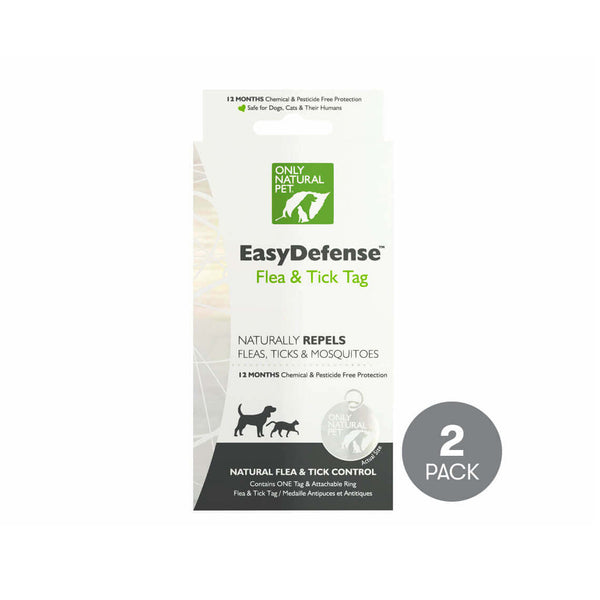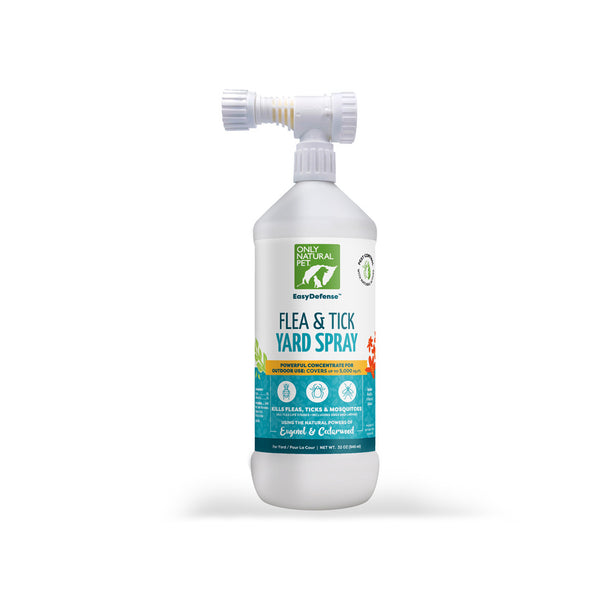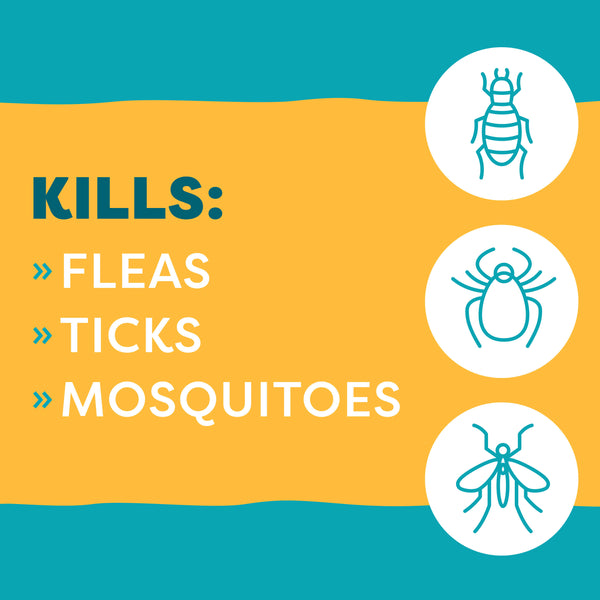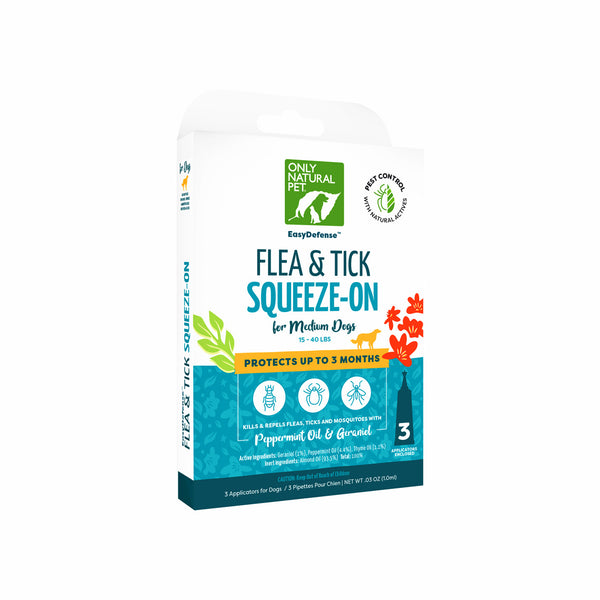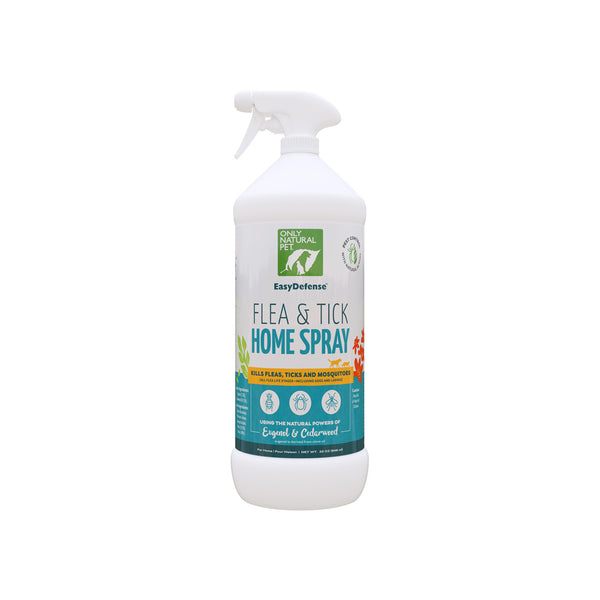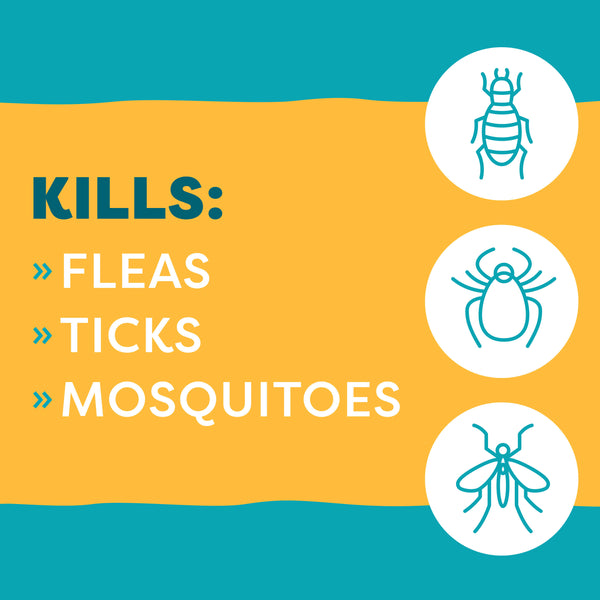When Is Flea & Tick Season?
Written by: Richard Rowlands, Pet Health Expert
Fleas and ticks can be a menace to your pets year-round, but they become more active in the warmer months.
Since the US is such a large geographic area with varying climate zones, flea and tick season can vary from state to state. Folks in some areas will need to be vigilant year-round, while others may enjoy a respite from these pests depending on how cold their winters get.
Generally, sustained temperatures of 10°F (-12°C) are needed to kill ticks and fleas outdoors and put their lifestages into proper dormancy.
It’s really important to be aware of when to take precautions against fleas and ticks because they can cause several issues for your pets including some serious and potentially life-threatening illnesses. These include anemia, Lyme disease, Rocky Mountain spotted fever, heartworm disease, and bartonellosis – to name just a few.
In this post, we'll provide an overview of when flea and tick season is throughout the US so you can best protect yourself, your pets, and your home.
Northeast
The Northeastern United States is bordered by Canada to the North and the Atlantic Ocean to the east. It is also the country’s most densely populated region. As such, you can be sure there are a lot of pets in this area!
States generally considered part of this region include Connecticut, Delaware, Maine, Maryland, Massachusetts, New Hampshire, New Jersey, New York, Pennsylvania, Rhode Island, and Vermont.
Flea and tick season will start with the onset of spring in late March to early April. However, depending on how far south you go, it may end in either November or December according to when the temperatures drop for winter.
Pennsylvania
Flea and tick season in this state and those lying south of it can last well into December. That’s because of where they lie geographically. Folks in the northern and central parts of Pennsylvania will see a shorter season. Those more south will experience not just longer growing seasons, but longer flea and tick seasons as well. Be vigilant until at least December!
Southeast
The American Southeast is sprawling, with the Atlantic Ocean to the east, the Gulf of Mexico to the south, and reaching quite far inland as well.
There are varying opinions of the region that is defined as “Southeast”, however, the US Geological Survey considers it to include Alabama, Arkansas, Florida, Georgia, Louisiana, Kentucky, Mississippi, North Carolina, South Carolina, Tennessee, Virginia, and West Virginia, as well as Puerto Rico and the U.S. Virgin Islands.
Pet parents in this area must be on guard all year long when it comes to fleas and ticks, including eggs, larvae and adults.
Florida
Year-round fleas and ticks in Florida are thanks to the great climate. The north and central portions are considered subtropical while the south is tropical. There is also a recognized rainy season that begins in May and gives way to the dry season in October. These warm, humid conditions are great for fleas and ticks, so pet parents beware!
Midwest
The midwestern United States can be found in the central, northern region of the country, with the Canadian border just above it and the Great Lakes in the northeast. It doesn’t border any oceans.
States included in this area are Illinois, Indiana, Iowa, Kansas, Michigan, Minnesota, Missouri, Nebraska, North Dakota, Ohio, South Dakota, and Wisconsin. So right away you’re probably realizing that there are varying lengths of time that fleas and ticks are active in this zone.
Those in North Dakota are going to enjoy one of the shortest flea and tick seasons with a late start in May and early finish in November.
South Dakota, Nebraska, Michigan, Minnesota, Iowa, and Wisconsin residents will all need to kickstart their treatment and repellent efforts in April and can taper off in November. The exception here is for Michiganders who, thanks to more temperate weather from the Great Lakes, will see their season ending in December.
The remaining states in the region – Kansas, Missouri, Illinois, Indiana, and Ohio – will have the longest flea and tick season starting in March and ending in December.
Southwest
The southwestern US is also not a precisely defined region, but is generally accepted to include Arizona, California, Colorado, Nevada, New Mexico, Oklahoma, Texas, and Utah. As such it is bordered to the west by the Pacific Ocean and the south by Mexico and the Gulf of Mexico.
It is another diverse region when it comes to flea and tick activity with some parts being year-round (California, Nevada, Arizona, and Texas); some being on a March to December timeline (Utah, New Mexico, and Oklahoma); and one (Colorado) having a shorter April to November season.
California
Much of California has warm, dry summers and mild, wet winters. However, there is some variation with wet, temperate rainforest in the north and hot, arid desert in the interior, and even some snowy mountains.
Outside of those colder mountain zones, California should be considered a year-round flea and tick region thanks to the lack of a proper winter freeze.
Texas
Texas also has diverse climate regions owning to its large geographical coverage. The west will be arid-to semi-arid and you’ll find subtropical portions to the east.
Some regions will have lower temperatures during winter months and even receive snow, including the northern panhandle and lone mountain ranges in the Big Bend Country. But generally, Texans should consider themselves a year-round area for fleas and ticks and take appropriate measures to protect their pets.
Northwest
With the Pacific Ocean to the west and Canadian border to the north, the American northwestern states will have varying flea and tick seasons depending on which one you are living in.
The states for consideration here are Oregon, Idaho, Montana, Washington, and Wyoming.
Due to their coastal, temperate climates, Washington and Oregon will have year-round activity when it comes to fleas and ticks. Idaho will have a winter break, but still a long season from March to December. Montana residents can consider April their start and November an end while Wyomingites have the shortest period starting in May and also ending in November.
Alaska & Hawaii
As you might guess, living in the northern reaches of the continent will mean a much shorter flea and tick season for Alaskans. In fact, it is the shortest in the entire country, starting in May and ending in October.
Hawaii is the exact opposite and yes, is another year-round region.
Protecting Your Pets
It’s important to keep in mind that the guidelines provided here are exactly that. From year-to-year, weather patterns can change. An early spring or a late winter can have huge impacts on the flea and tick populations for your area, so it’s important to keep this in mind.
Even if you live in an area that doesn’t have year-round flea and tick activity, providing protection 365 days a year isn’t a bad thing. You can do this through a variety of natural products that can be safely used on your pet, in your home, and even outdoors around your property.
Check out our full lineup of flea and tick control products to find a solution that meets the needs of your four-legged family members and will keep everyone in your home safe and happy.




